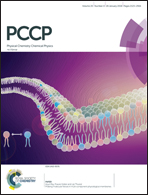Abstract
Two-dimensional group IVA materials (graphene, silicene, germanene, stanene, and plumbene) are promising candidates for realization of the quantum spin Hall effect and for future device applications. We employ density functional theory, tight-binding models, and a Green's function method to systematically investigate their topological properties. From graphene to plumbene, the strength of spin–orbit coupling and the bulk gap increases with increasing atomic mass, and plumbene, as a normal insulator, is totally different from the other four materials, whose ground states are topological insulators. Through detailed analyses of orbital character weights and the evolution of low-energy states around the Γ point, we explain why plumbene is so different. Our quantum transport calculations also indicate that there exist electronic transport channels along edges within the bulk gap of topological insulators. By investigating the effects of external fields on the electronic structures of silicene, germanene, and stanene, we reveal a rich phase diagram and propose two filters with nearly 100% spin polarization. In addition, we present a theoretical design for a spin twister, based on curved two-dimensional topological insulators.


 Please wait while we load your content...
Please wait while we load your content...